Managing Swift Responses to Radiation Accidents
Biological dosimetry involves the assessment of biological markers, such as chromosomal aberrations or micronuclei, to estimate the dose received by an individual following radiation exposure. The fundamental principles include the correlation between biological effects and radiation dose, the use of well-established biomarkers, and the application of quantitative models to interpret these effects.
Speed is vital in biodosimetry analysis, as prompt results are key for effective medical triage and intervention during radiation emergencies. Quick analysis enables rapid evaluation of exposure levels and supports immediate treatment, and aids in managing resources effectively. Given that many established biodosimetry tests involve microscopy, automating the analysis can be a significant advancement.

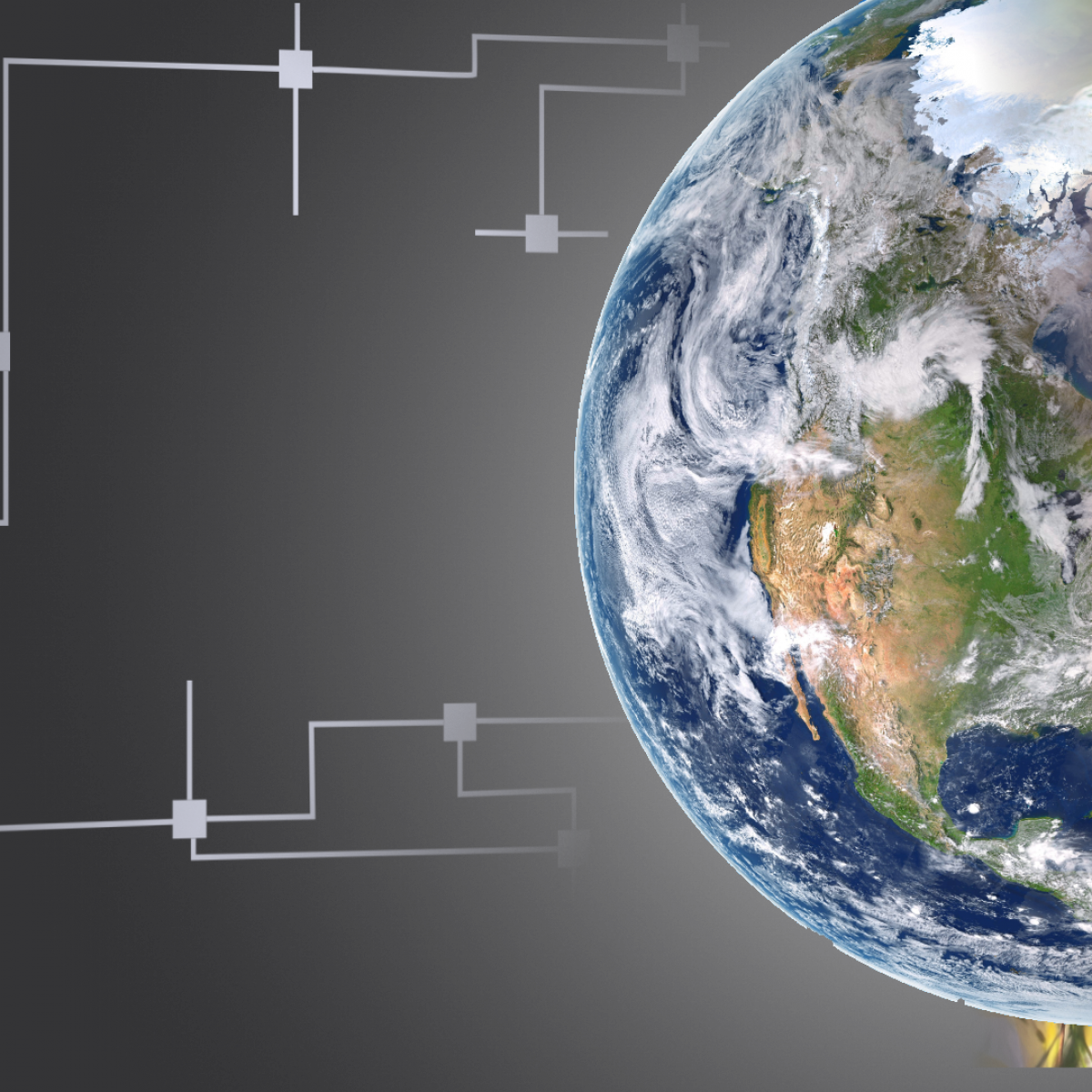
Facilitating International Collaborations
The standardization of microscopy in international biodosimetry collaboration networks offers significant advantages by fostering uniformity and reliability across diverse research settings. Standardized protocols and calibration methods enable seamless data comparison and integration from different laboratories worldwide, enhancing the accuracy and credibility of collective findings. This uniformity is crucial for developing globally recognized dose-response curves, improving radiation exposure assessments, and facilitating swift, coordinated responses to radiological emergencies. Moreover, it promotes resource sharing, collaborative research, and the development of universally accepted guidelines and regulations, ultimately advancing the field of radiation safety and public health on a global scale.
With our extensive experience in automated imaging, we have become a trusted partner for biodosimetry labs worldwide. Our flexible workflows can be adapted to different scoring criteria and integrated into existing laboratory systems, ensuring seamless operations even under time pressure.
Customizations
Metaphase
Users have successfully implemented the Metafer Platform Software with our assistance to detect metaphases in various preparation techniques, including G-banding, R-banding, Q-banding, and DAPI banding. With support from MetaSystems application specialists, users can tailor their installations to include Deep Neural Networks (DNNs) to address challenging preparations. Automated image capture is scalable to process up to 800 slides in a single run.
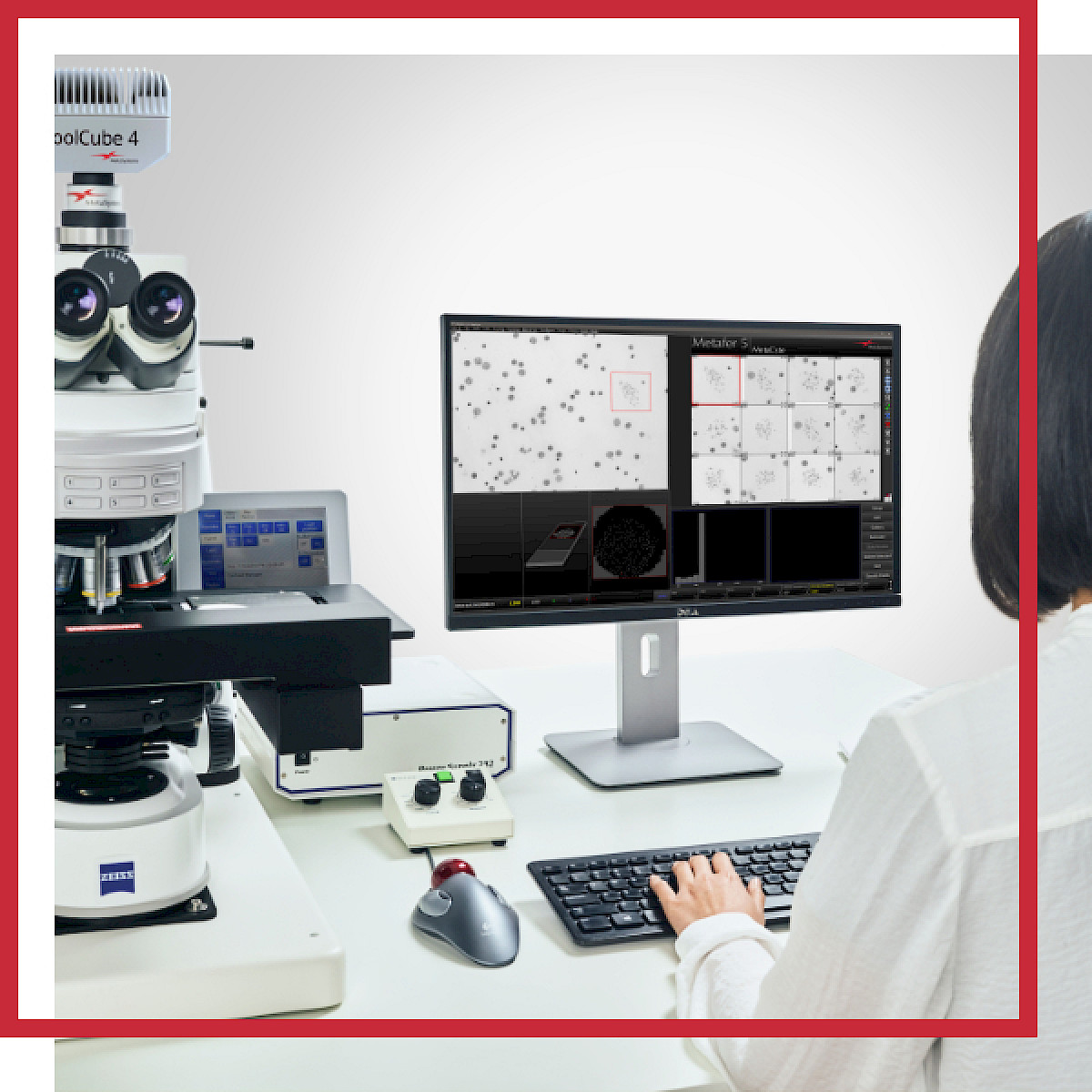
Aberration Scoring

Automated detection of dicentric chromosomes (DICs) offers high-throughput analysis with user-adjustable parameters. Integrated tools, like an interactive Chi-square calculator, enable rapid statistical evaluations, while flexible reporting options allow for seamless export or printing. The software offers features to document images, processing and results that allow users to configure a workflow following GLP standards.
Comet Assay
The Comet assay, or single-cell gel electrophoresis assay, measures DNA fragmentation in individual cells to assess damage caused by chemicals or radiation. Using Metafer Platform Software, workflows can be customized to automate object detection, background correction, and parameter extraction, such as tail moment and %DNA in the tail. Results are visualized through galleries, histograms, and scatter plots for easy interpretation. Metafer supports multi-gel samples, varying exposure times, and the analysis of highly damaged "Hedgehog" comets.
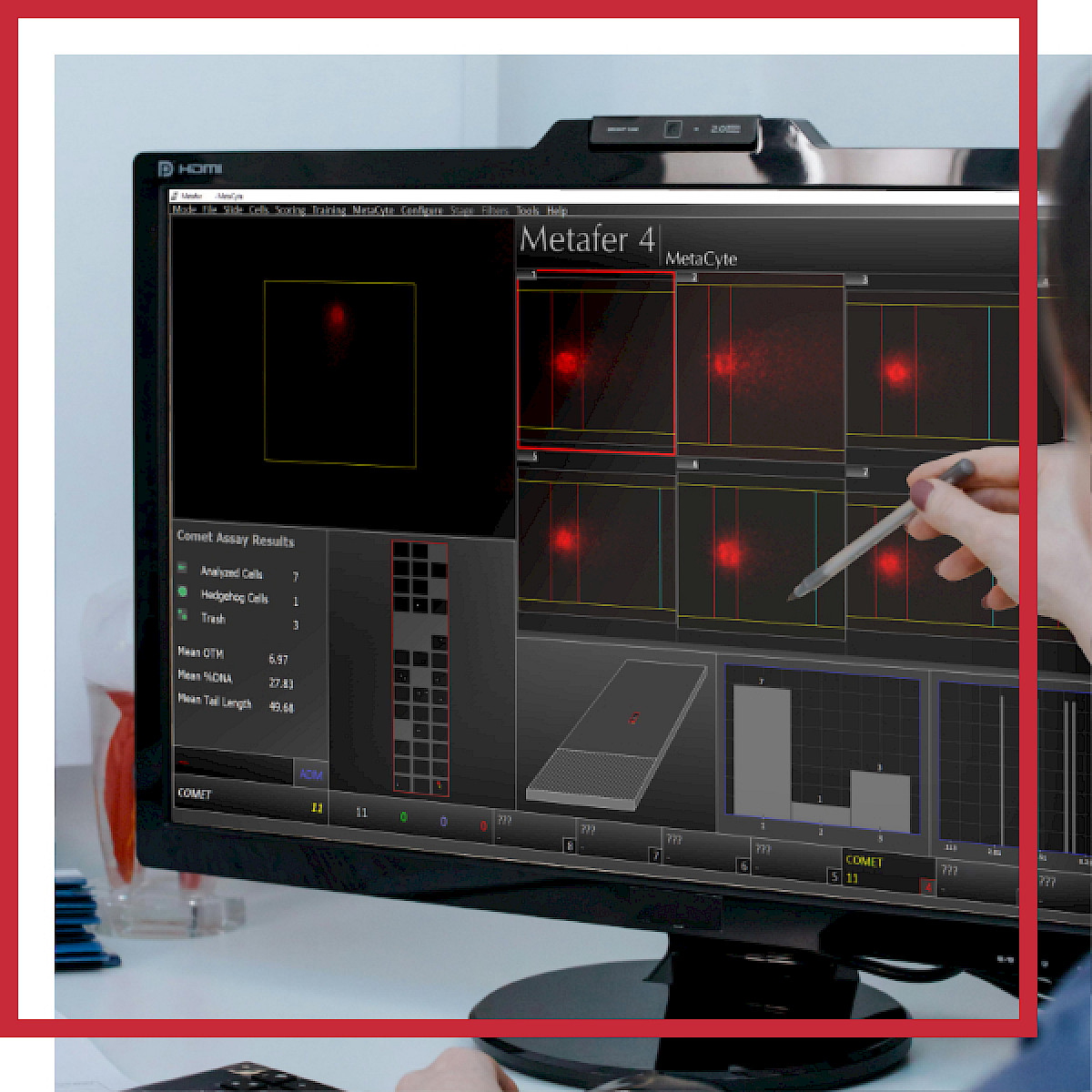
Counting of Foci
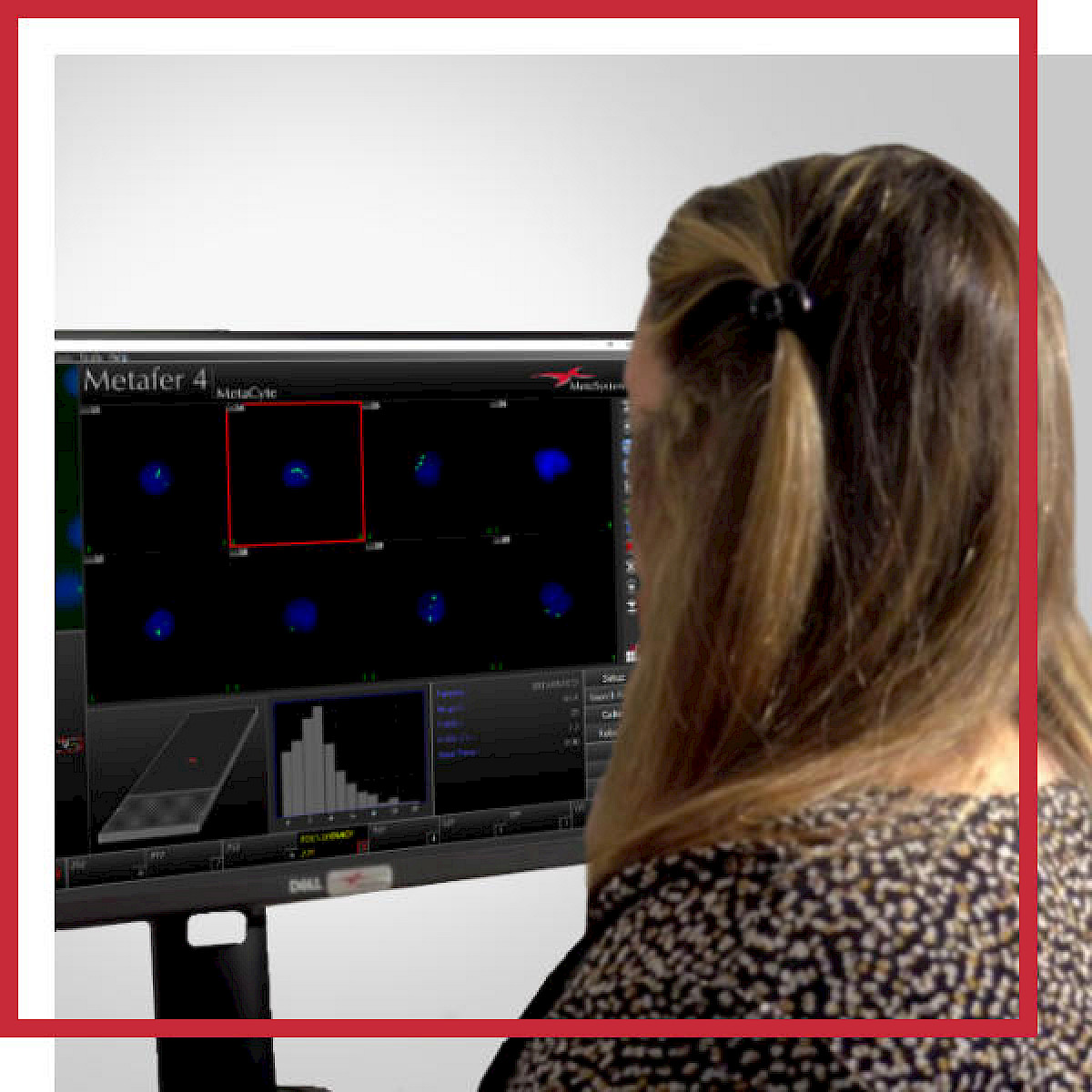
Metafer streamlines the visualization and quantification of γ-H2AX foci, markers of double-strand DNA breaks (DSBs) linked to genomic instability. γ-H2AX foci are automatically detected and counted using Metafer’s spot-counting features. Custom workflows enable fine-tuning of scoring criteria to account for varying foci sizes or merged signals, adapting to specific experimental needs.
in vitro MN Test
The Cytokinesis-Block Micronucleus (CBMN) assay is a widely used method in genetic toxicology and biological dosimetry for detecting DNA damage by analyzing binucleated cells for micronuclei. The Metafer Platform streamlines this process with automated slide scanning, cell detection, and micronucleus counting, displaying results in an intuitive gallery linked to slide positions. Tailored workflows reduce workload, improve standardization, and enable efficient analysis in radiation dose estimation and genetic toxicology studies.
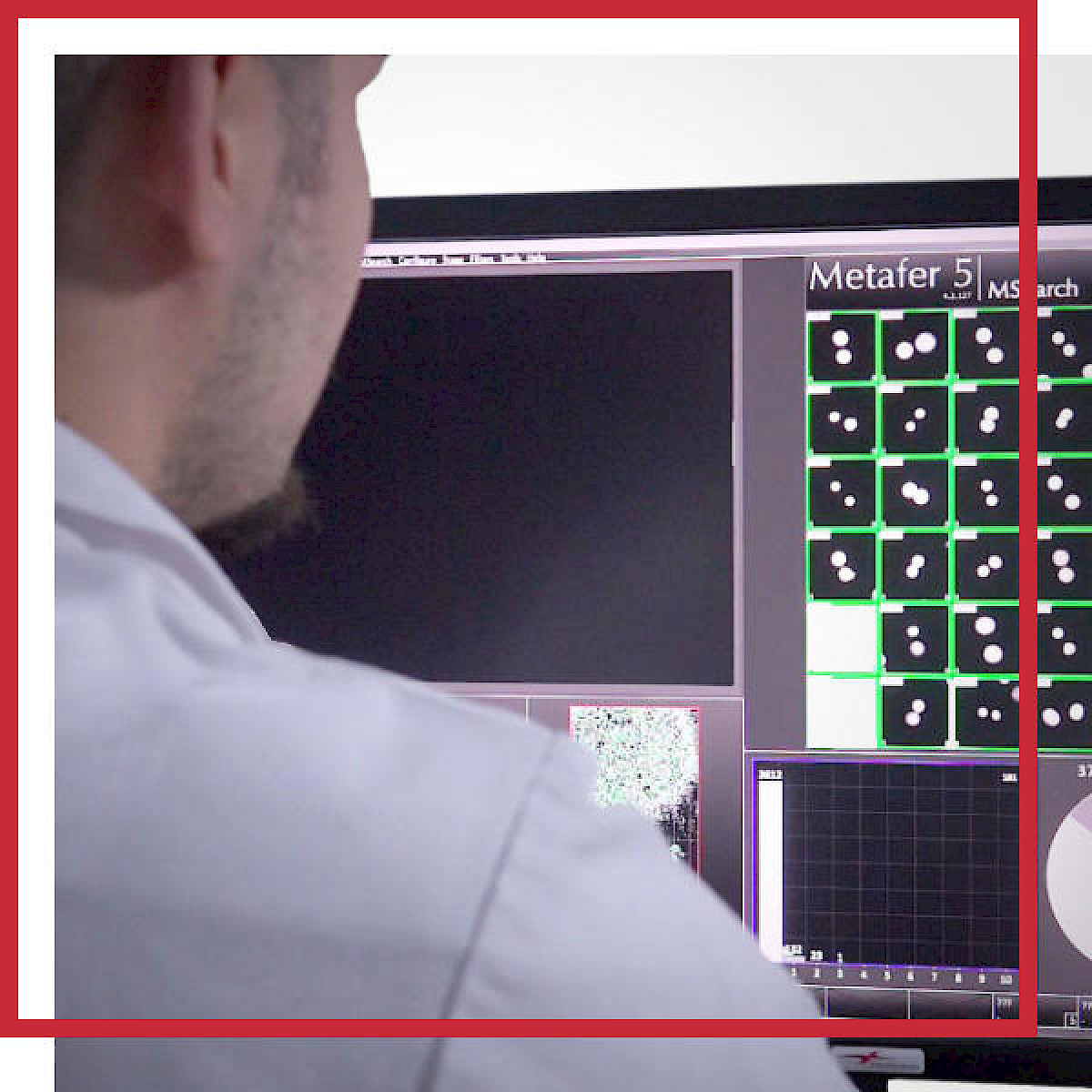
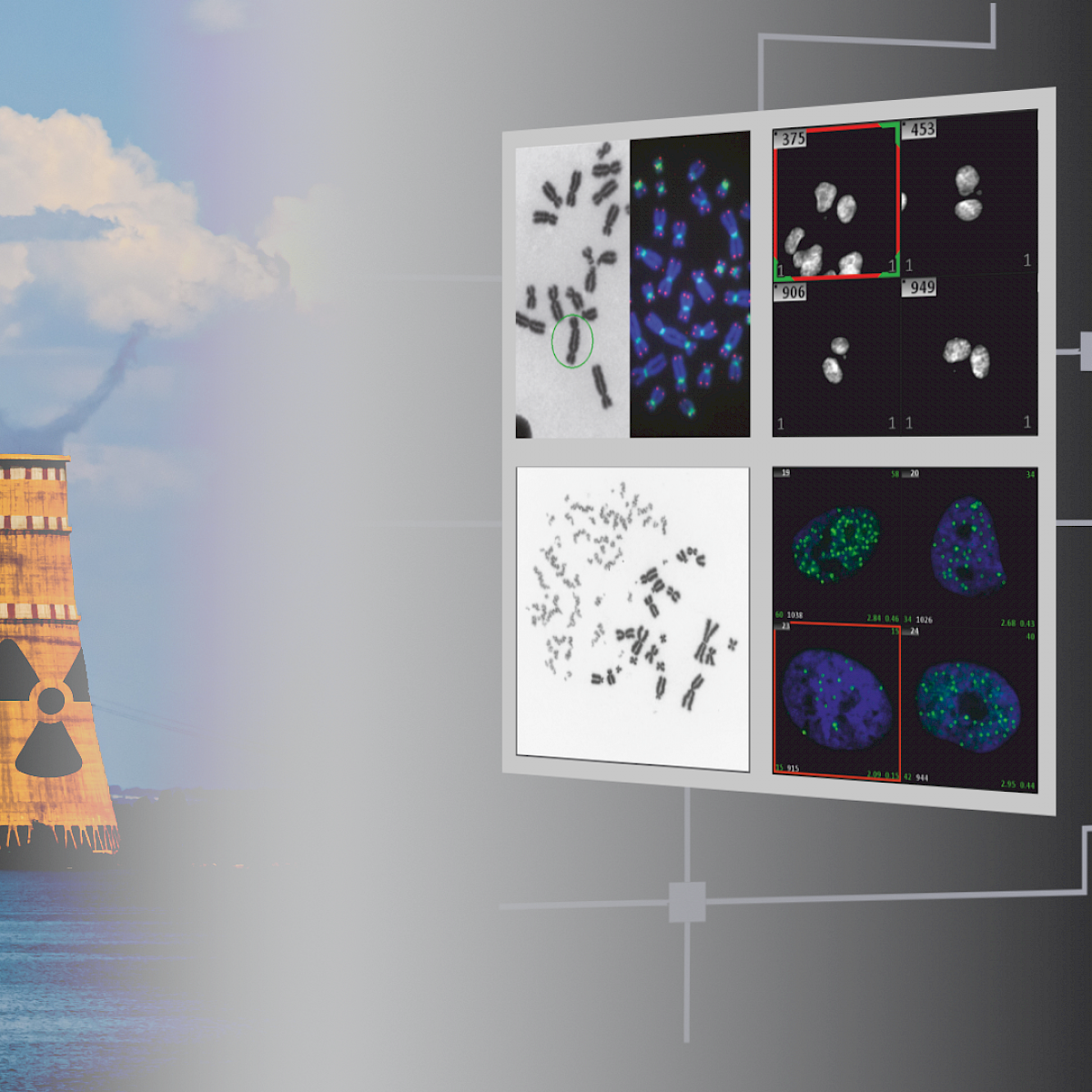
Recent Publications
Numerous radiation protection networks and other users globally rely on Metafer for biological dosimetry and share the outcomes of their validation and calibration research. Here are some recent examples of these publications:
-
Lee Y., et al.: Application of a semi-automated dicentric scoring system in triage and monitoring occupational radiation exposure. Front Public Health 10, 2022.
-
Vral A. et al.: RENEB Inter-Laboratory Comparison 2021: The Cytokinesis-Block Micronucleus Assay. Radiat Res 1, 2023.
-
López JS., et al.: Establishment and validation of surface model for biodosimetry based on γ-H2AX foci detection. Int J Radiat Biol 98(1), 2021.
-
Schuermann et al.: Assessment of Genotoxicity in Human Cells Exposed to Modulated Electromagnetic Fields of Wireless Communication Devices. Genes 11(4), 2020.
Legal Note
Customization Packages
MetaSystems software provides, among other functions, features to assist users with image processing. These include, but are not limited to, the use of machine and deep learning algorithms for pattern recognition. The output generated in this process should be regarded as preliminary suggestions and, in any case, mandatorily requires review and assessment by trained experts.
MetaSystems offers Customization Packages for application workflows that have been successfully implemented for customer labs using standard Metafer platform functionality. It is expected that they can be implemented for other customer labs using similar workflows and slide preparation procedures. If a Customization Package is purchased, MetaSystems product specialists will – based on their experience from other similar application cases - support the customer lab in adapting the Metafer software configuration to their needs. The performance of the solution will depend on the quality of the customer slides and the expertise of the users, MetaSystems cannot specify or guarantee any performance parameters. The validation of the solution for clinical use is the sole responsibility of the customer lab.